Amazonite
Amazonite, despite the name, does not occur in the Amazon basin. Presumably, the name has been associated with the colours – a light bluey-green colour, or the Amazon river area produced another green stone.
There is a significant difference in both colour and texture between Chinese and Russian Amazonite – or Russian and Peruvian.
The Russian material tends to be a darker green, with occasional white stripes and patches, whereas the other locales tend to produce a smooth light green colour.
Showing all 12 results
-

Amazonite and Smoky Quartz palmstones
Price range: £4.00 through £6.00 -
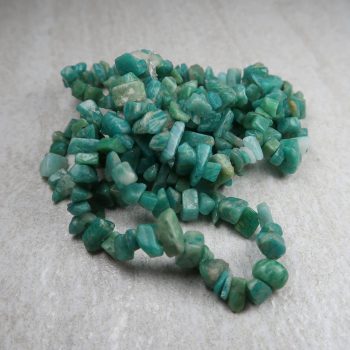
Amazonite bead strands
Price range: £4.00 through £5.00 -
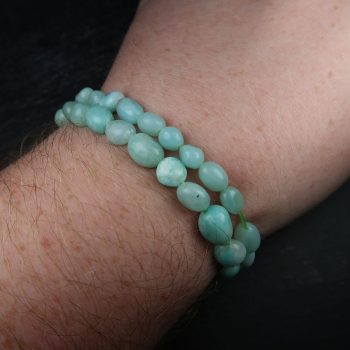
Amazonite Bracelets
Price range: £2.50 through £3.50 -
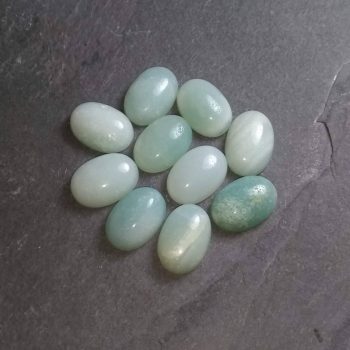
Amazonite Cabochons
Price range: £1.50 through £7.00 -
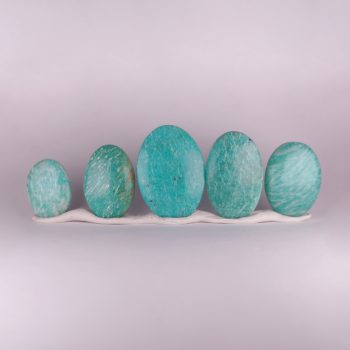
Amazonite Cabochons (Freeforms)
Price range: £3.50 through £6.50 -
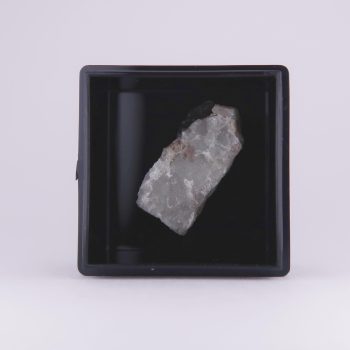
Amazonite from Franklin Mine, USA
£2.00 -
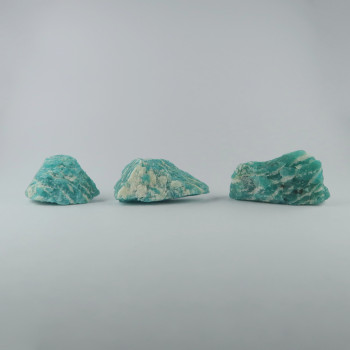
Amazonite from Ploskaya Mt, Russia
£3.50 -
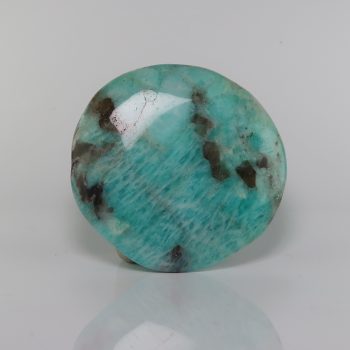
Amazonite Palmstones
Price range: £4.00 through £6.00 -
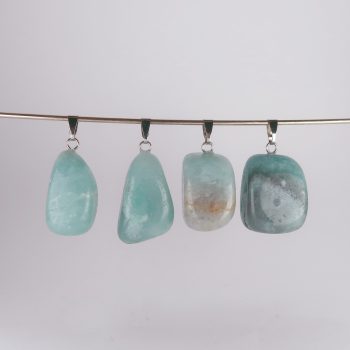
Amazonite Pendants
Price range: £1.30 through £2.00 -
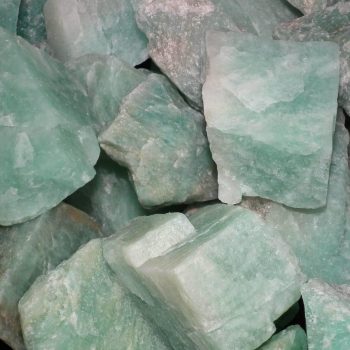
Amazonite Specimens / Rough
Price range: £2.00 through £8.00 -
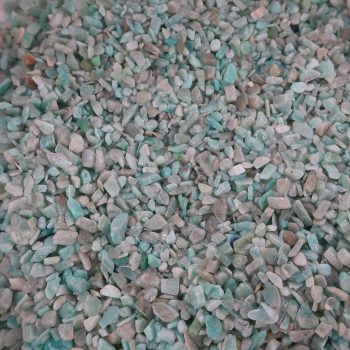
Amazonite tumblechips
£2.00 -
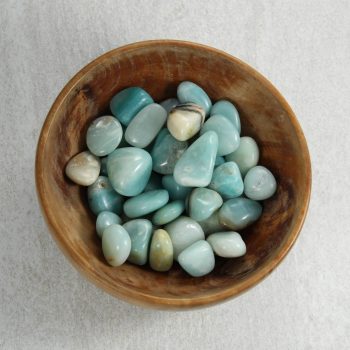
Amazonite Tumblestones
Price range: £1.00 through £2.50
Appearance, Uses and History
Amazonite is a trade name, rather than a specific mineral – it is a variety of Microcline.
There is archaeological evidence that Amazonite has been carved and used as a gemstone for at least two thousand years, from excavations of civilisations in Ancient Egypt and Mesopotamia.
Amazonite is still used as a gemstone, although it is very uncommon in mass produced jewellery. Amazonite is, however, quite prized by mineral collectors. It has good colour and often occurs with other minerals, including quartz, schorl, and smoky Quartz.
It was potentially named after the Amazon river, although no Amazonite has been found there – it could have been named after another green stone in the area, though. Alternately, it may have simply reminded the namer of the colours of the Amazon.
Locales
Amazonite is found in a few countries worldwide including Afghanistan, Australia, Brazil, Canada, China, Ethiopia, Madagascar, Namibia, Norway, Peru, Portugal, Russia, and the USA.
Mineralogy
Hazards and Warnings
Almost all rocks, minerals (and, frankly, almost all other substances on earth) can produce toxic dust when cutting, which can cause serious respiratory conditions including silicosis.
When cutting or polishing rocks, minerals, shells, etc, all work should be done wet to minimise the dust, and a suitable respirator or extraction system should be used.
Translations
Arabic:
- امازونيت
Hindi:
Portuguese:
- amazonita
Bengali:
Indonesian:
Punjabi:
- ਐਮਾਜ਼ੋਨਾਈਟ
English:
Italian:
Russian:
- амазонит
French:
Japanese:
- アマゾナイト
Spanish:
- amazonita
German:
- Amazonit
Korean:
Thai:
- แอมะซอไนต์
Gujurati:
- એમેઝોનાઇટ
Mandarin and Traditional Chinese:
- 天河石
Urdu:
